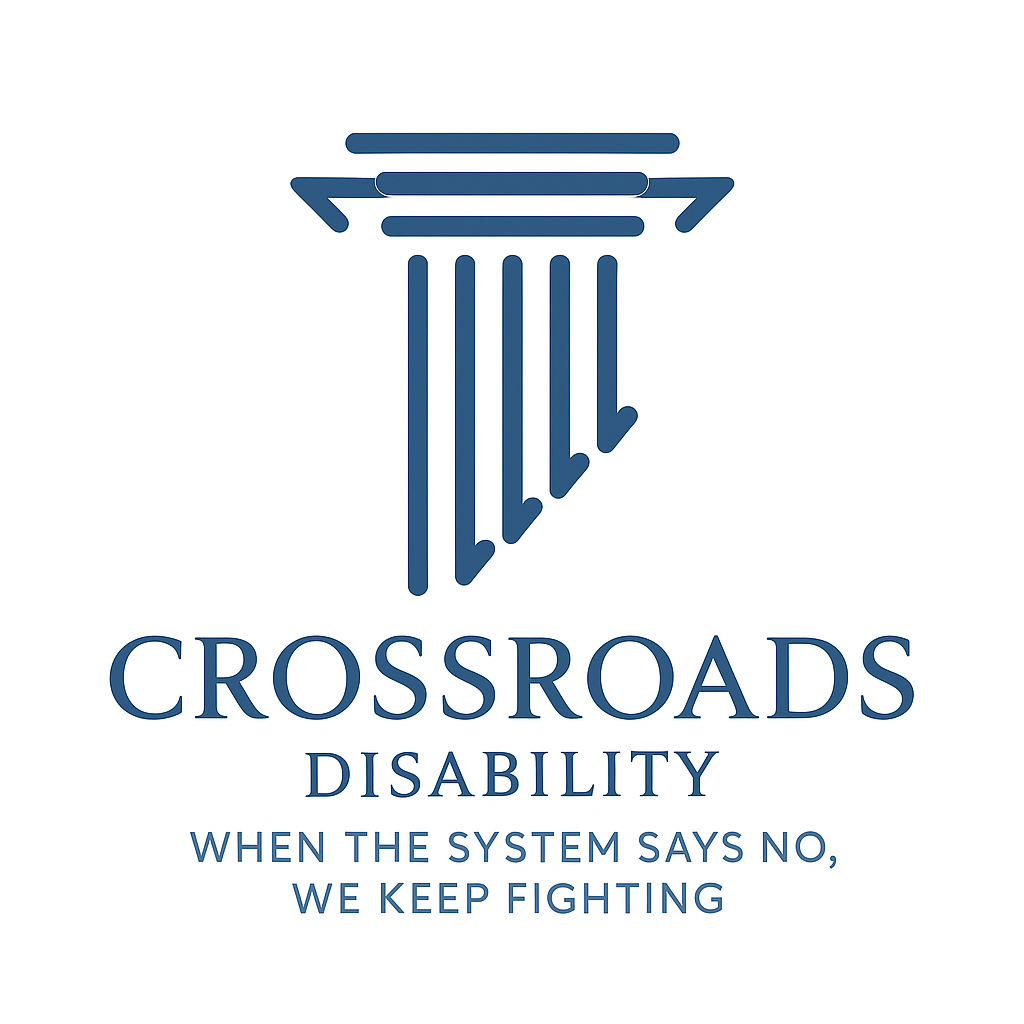What Is the 5-Step Sequential Evaluation Process?
5 step sequential process for ssd decisions

If you’ve applied for Social Security Disability Insurance (SSDI) or Supplemental Security Income (SSI), you’ve probably heard the term “5-step sequential evaluation process.”
This is the system the Social Security Administration (SSA) uses to decide whether someone is disabled under federal law. Every disability claim — no matter your age, work history, or medical condition — is judged using these same five steps.
At Crossroads Disability, we help clients across Indiana navigate this process and understand what Social Security looks for at each step.
⚖️ Step 1: Are You Working?
The first question SSA asks is: Are you currently working and earning above the “Substantial Gainful Activity” (SGA) level?
- In 2025, that limit is $1,620 per month for most individuals (and $2,700 if you’re blind).
- If you’re working and earning more than that amount, SSA will likely find you not disabled at Step 1.
- If you’re not working or earning below the SGA level, your claim moves to Step 2.
👉 Even part-time or self-employment income can affect this step — so it’s important to be accurate about your earnings.
🩺 Step 2: Do You Have a Severe Medical Impairment?
Next, SSA looks at your medical conditions to determine if they are “severe.”
A condition is considered
severe if it
significantly limits your ability to perform basic work activities — like walking, standing, lifting, remembering, or concentrating — for at least 12 months.
If your conditions are mild or expected to improve quickly, your claim may be denied here.
If you have one or more severe conditions, your case moves forward.
📋 Step 3: Does Your Condition Meet or Equal a Listed Impairment?
SSA maintains a book called the
“Listing of Impairments” (often called “the Blue Book”).
It contains detailed medical criteria for many common physical and mental disorders — such as back problems, heart disease, depression, and anxiety.
If your medical records show that you meet or equal one of these listings, you’re considered disabled automatically at Step 3 — no further steps needed.
If not, SSA moves on to evaluate what kind of work you could still do.
⚙️ Step 4: Can You Do Your Past Work?
Here, SSA determines your Residual Functional Capacity (RFC) — an assessment of what you can still do physically and mentally despite your impairments.
Then they ask:
“Can this person still perform any of their past relevant work?”
If your RFC shows that you can’t do your previous jobs — either because of physical limits, pain, or mental limitations — the process moves to the final step.
🧾 Step 5: Can You Do Any Other Work?
This is often the hardest step for claimants.
SSA considers your
age, education, work experience, and RFC to decide if there’s any other work you could adjust to in the national economy.
- For younger individuals (under 50), SSA expects more flexibility in finding other jobs.
- For older workers (50 and up), the rules become more favorable, especially if you have limited education or job skills that don’t transfer easily.
If SSA determines you can’t perform any type of substantial work, you’ll be found disabled at Step 5.
🧠 Why This Process Matters
Every SSDI and SSI decision follows this five-step sequence — whether it’s made by a claims examiner, a judge, or the Appeals Council.
Understanding the sequence helps you know:
- Why SSA denied your claim
- What evidence matters most
- How to strengthen your case for appeal
At Crossroads Disability, we build every claim around this 5-step framework — ensuring your medical evidence, testimony, and legal arguments align with SSA’s own standards.
📞 Get Help Navigating the Process
The Social Security system is complex, but you don’t have to go through it alone.
If you’ve been denied or are applying for the first time,
our team can guide you step-by-step — gathering evidence, filing appeals, and representing you at your hearing.
👉 Click here to request a free consultation.
Or
click here for a free call and case evaluation by
Crossroads Disability today — and let’s start building your case the right way.










